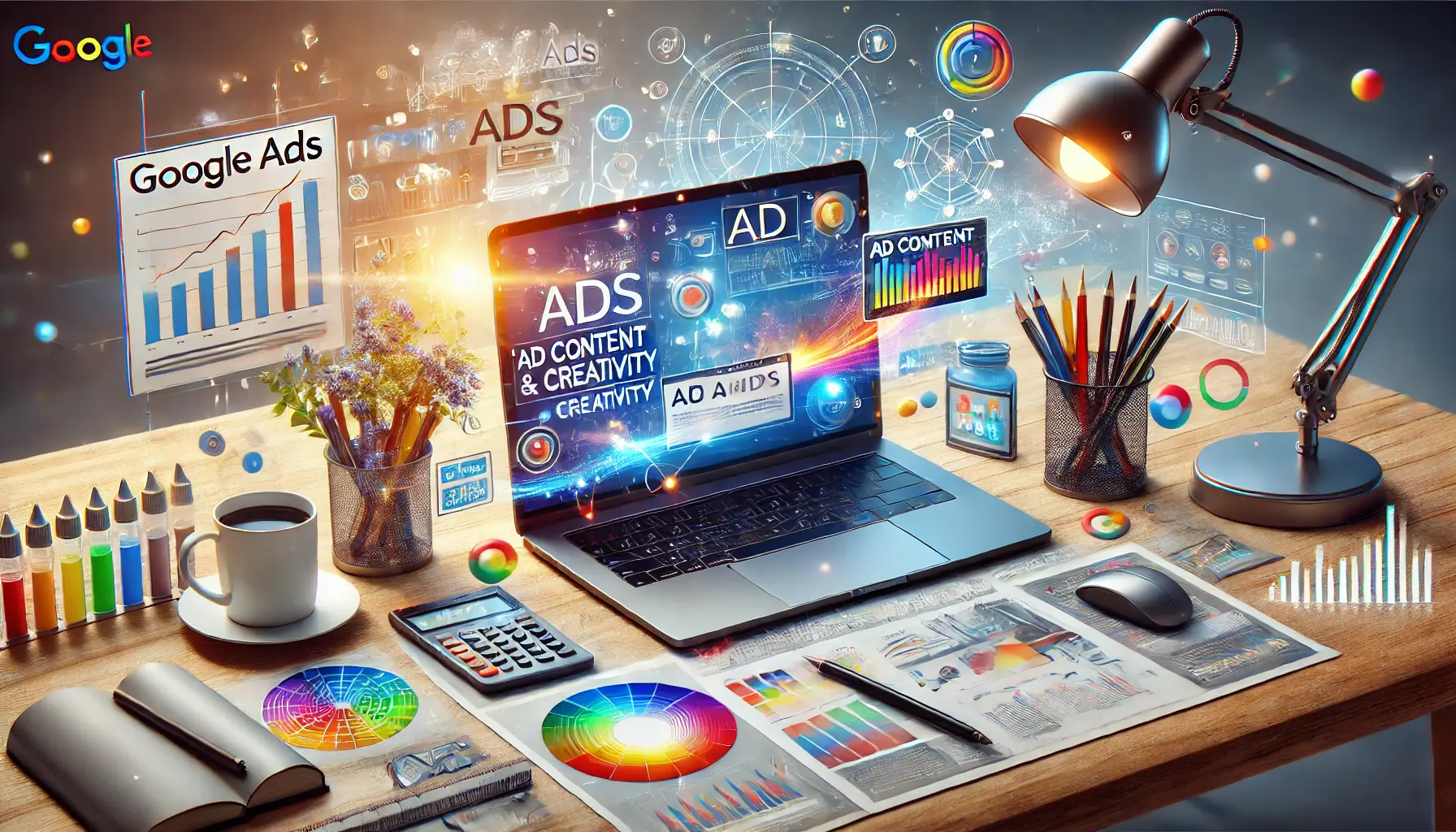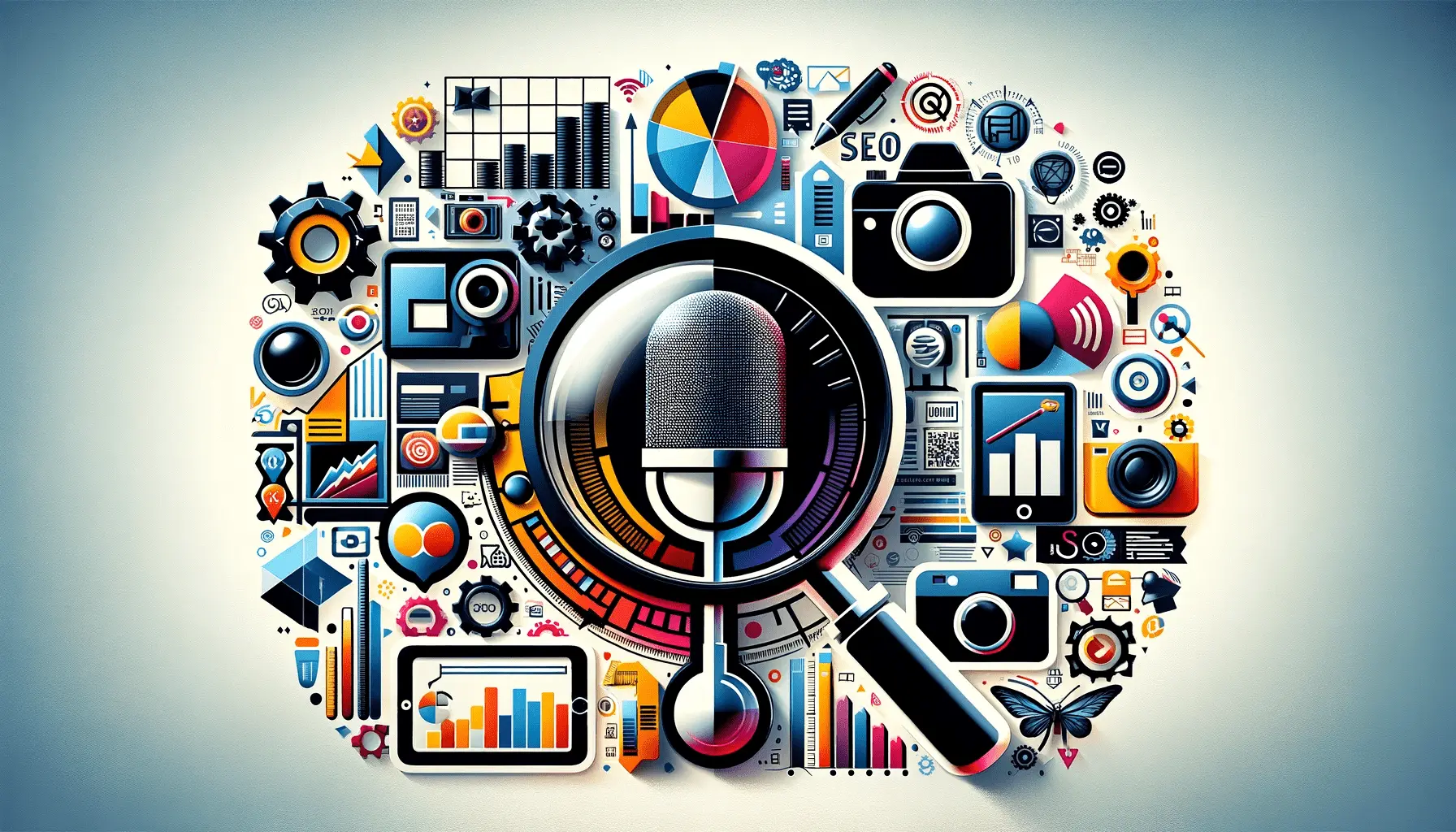Attention is really hard to capture in this day and age of digital advertising.
Due to the number of ads vying for people’s eyes, it’s all about creating ad content that really stands out.
Especially on Google Ads, creativity and relevance are the lifeblood of your ad.
But what does creating a ‘creative’ ad mean?
How does creativity actually improve the performance of Google Ads campaigns?
In this article, we will discuss why creativity matters in Google Ads and how to create interesting ad content that resonates with your target audience.
As digital marketers, the basis of connecting with prospective customers lies in realizing the importance of creative ad content.
Google Ads is a huge platform through which you’ll be able to promote your products, services, or brands to people who would give you much better responses.
But with uncreative and lackluster ad content, ads run the risk of simply fading into the background, lost to the viewer’s consciousness.
Let’s dive into the ways creativity in Google Ads can transform your campaigns, bump your conversions, and create memorable experiences for your brand.
Understanding the Importance of Ad Creativity
Creative ads are more than eye-catching—they engage, inform, and inspire action.
Being creative is all about finding unique ways to present your message so that it resonates with the right people at the right time.
Why does this matter?
Google Ads is a super competitive platform where businesses are constantly fighting for a person’s attention.
An ad with strong creative elements has the opportunity to set you apart from competitors and increase your chances of capturing a user’s interest.
In fact, creative ad content can directly affect key campaign metrics, including click-through rates, conversion rates, and ultimately, return on ad spend (ROASReturn on ad spend, a metric that measures revenue generated per dollar spent on advertising.).
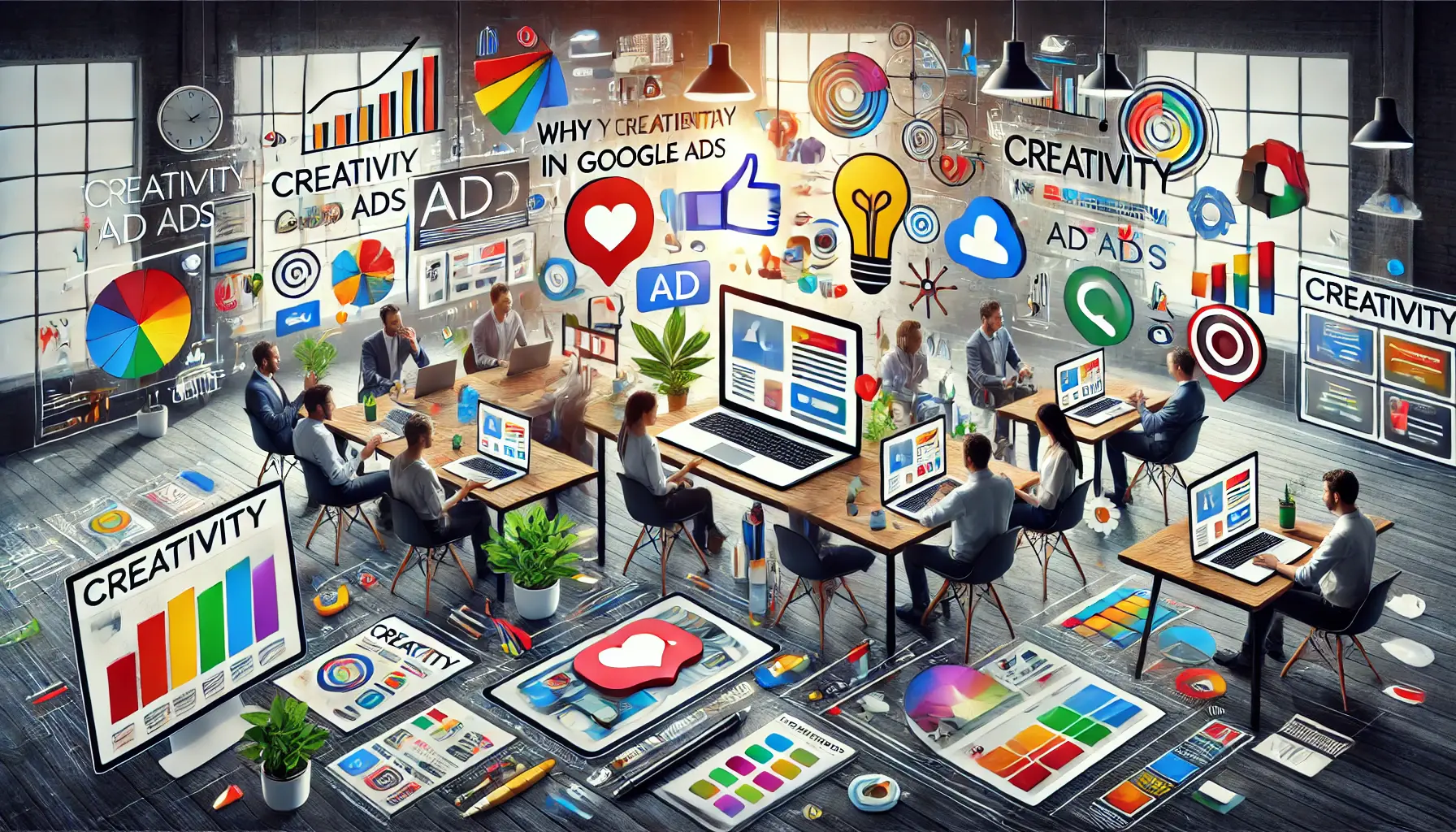
Collaborative brainstorming on creative ad concepts to enhance Google Ads effectiveness.
Why Creativity Matters in Google Ads
Creative ads are the ones that usually make an impression on viewers’ minds.
They are memorable and impactful because they convey a message that feels relevant and engaging to users.
In Google Ads, creative elements can make the difference between a user clicking on your ad or scrolling past it.
- Smarter Engagement: Ads that implement creative visuals, catchier language, and emotional themes tend to have higher engagement.
- Better Brand Perception: Creative ads place your brand in a setting that is innovative, professional, or relatable, depending on your chosen portrayal.
- Higher Conversions: When your ad content aligns with user interests, you’re more likely to drive conversions, as users feel a connection with the ad’s message.
By focusing on creative elements, you can make ads more appealing and efficient, encouraging users to engage and take action.
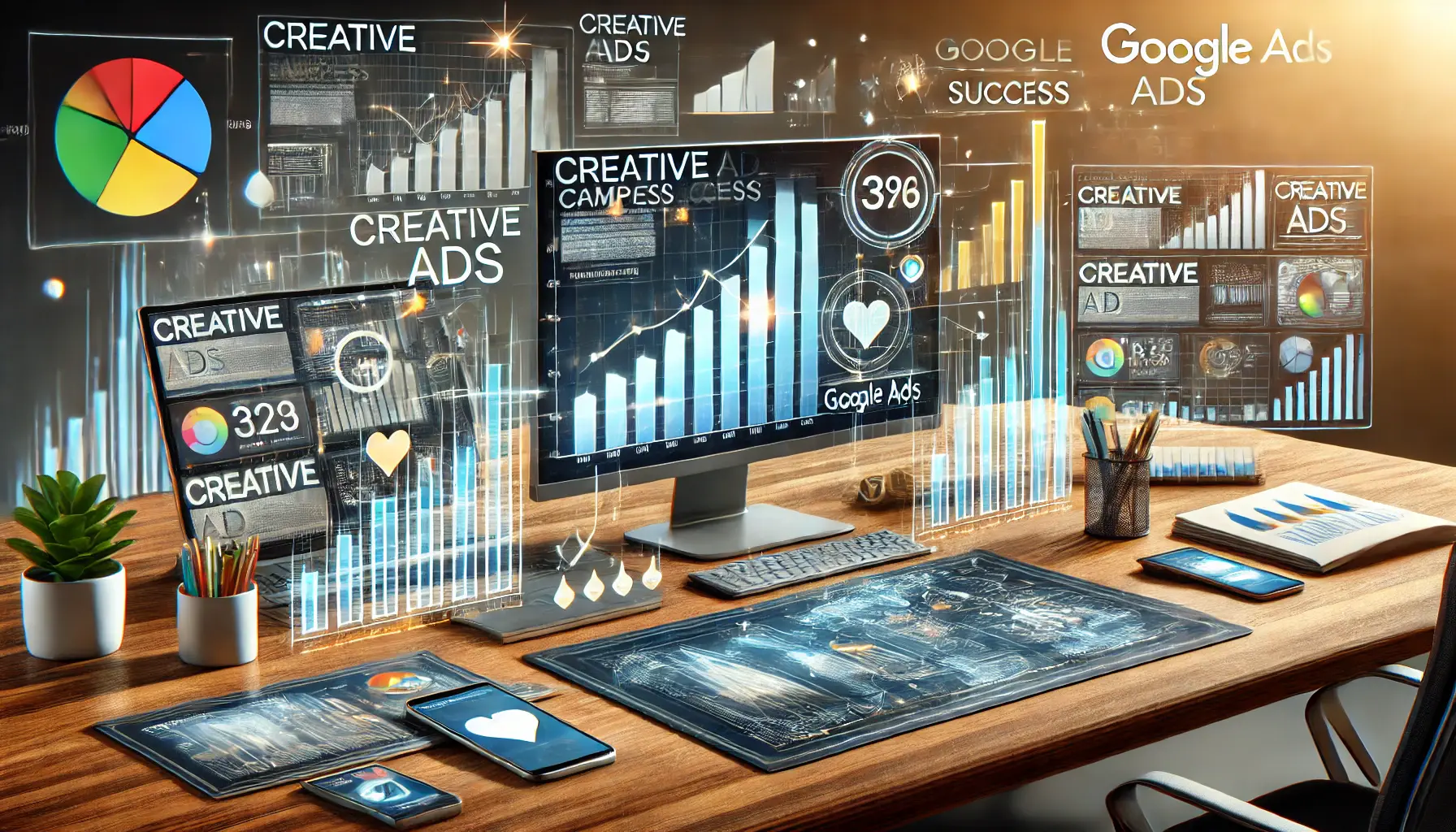
Visualizing the positive impact of creative ads on campaign performance in Google Ads.
Impact of Creative Ads on Campaign Success
The impact of creative ad content is measurable, particularly in key performance indicators such as click-through rateThe percentage of users who click on an ad after viewing it, abbreviated as CTR. (CTR) and cost-per-click (CPC).
Well-designed creative content will enhance these metrics by making your ad more relevant to the user, leading to better campaign outcomes.
- Lifting CTR: Creative ad content often results in a higher CTR, as users are more likely to click on ads that catch their eye and offer a clear, engaging message.
- Decreasing CPC: Google rewards high-quality and relevant ads with lower costs per click, meaning creativity helps you achieve more with your advertising budget.
- Improvement in Ad Quality Score: Creativity can positively impact your ad quality score, a major determinant of how often your ad appears and its placement in search results.
In conclusion, ad creativity is not just about looking good; it’s a strategy for boosting engagement and maximizing the power of your Google Ads.
In the next section, we’ll discuss how to create compelling ad content that captivates your audience.
Developing creative ad content requires much more than just wordplay or a creative image.
It’s about connecting to your users at a deep, vital level.
In Google Ads, where users expect a relevant, concise message, there is absolutely no path to success without compelling ad content.
High-quality ad content pays off not only in improving click-through rates but also in helping your brand make a lasting connection with potential customers.
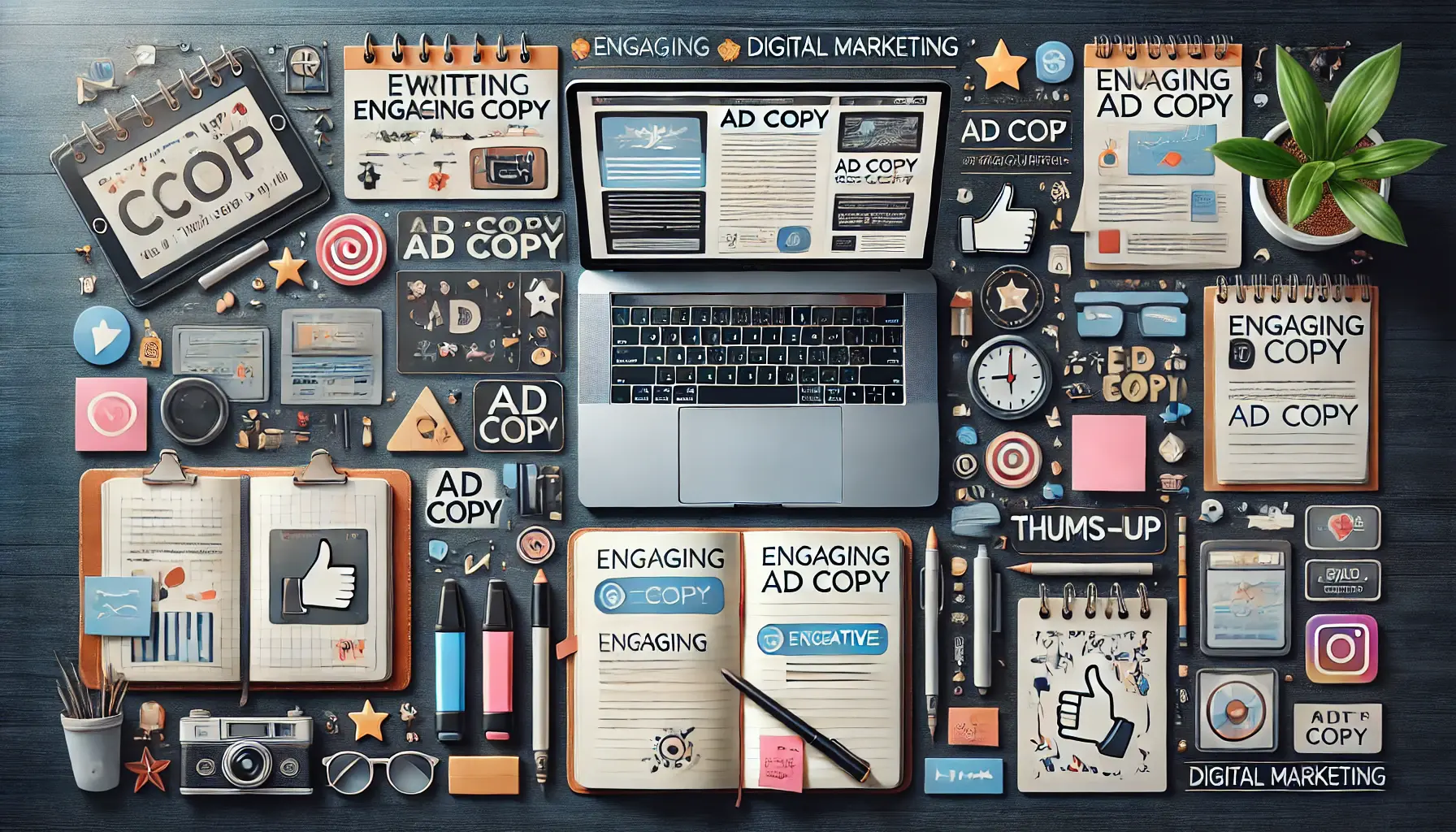
Exploring techniques and tips for crafting compelling ad copy.
Tips for Writing Engaging Ad Copy
Writing ad copy that engages is both an art and a science.
Here are a few strategies that can help make your ad copy more compelling:
- Use Clear, Actionable Language: Words like ‘discover,’ ‘try,’ or ‘unlock’ can increase user awareness and encourage action.
- Address Pain Points: Describe how your product or service solves a particular problem for them. This gives users a reason to click on the ad.
- Keep It Short and Concise: Long-winded descriptions often lose attention. Aim for impactful, easy-to-read language that delivers your message quickly.
- Incorporate Keywords: Ensure that your primary keywords appear naturally within the ad copy, as this boosts relevance and search visibility.

Illustrating the role of emotional appeal in boosting ad conversions.
Using Emotional Appeal to Drive Conversions
Ads that tap into users’ emotions tend to leave a stronger impression and drive more conversions.
Think of how your product or service could make your audience feel, and infuse that emotion into the ad.
- Emphasize Benefits, Not Just Features: Instead of listing features, focus on how your offering improves the user’s life.
- Use Positive Emotions: Words associated with happiness, satisfaction, or relief can encourage users to engage with your ad.
- Tell a Short Story: When applicable, use brief storytelling to create a relatable scenario that resonates with your audience.

Showcasing the importance of clarity and simplicity in ad messaging.
Power of Clear and Concise Messaging
In a fast-paced digital world, clarity is key.
When users are scrolling or searching, they need to see ads that effectively and concisely provide information.
A concise message helps in communicating your value proposition in a way that users will understand immediately.
- Focus on One Idea: Avoid cramming multiple concepts into a single ad. A clear, singular focus strengthens the ad’s message.
- Use Accessible Language: Keep the language simple and easy to understand, avoiding jargon and technical terms unless essential for your audience.
- Make the Value Obvious: Within a few seconds, users should understand why they should click. Highlight value propositions front and center.
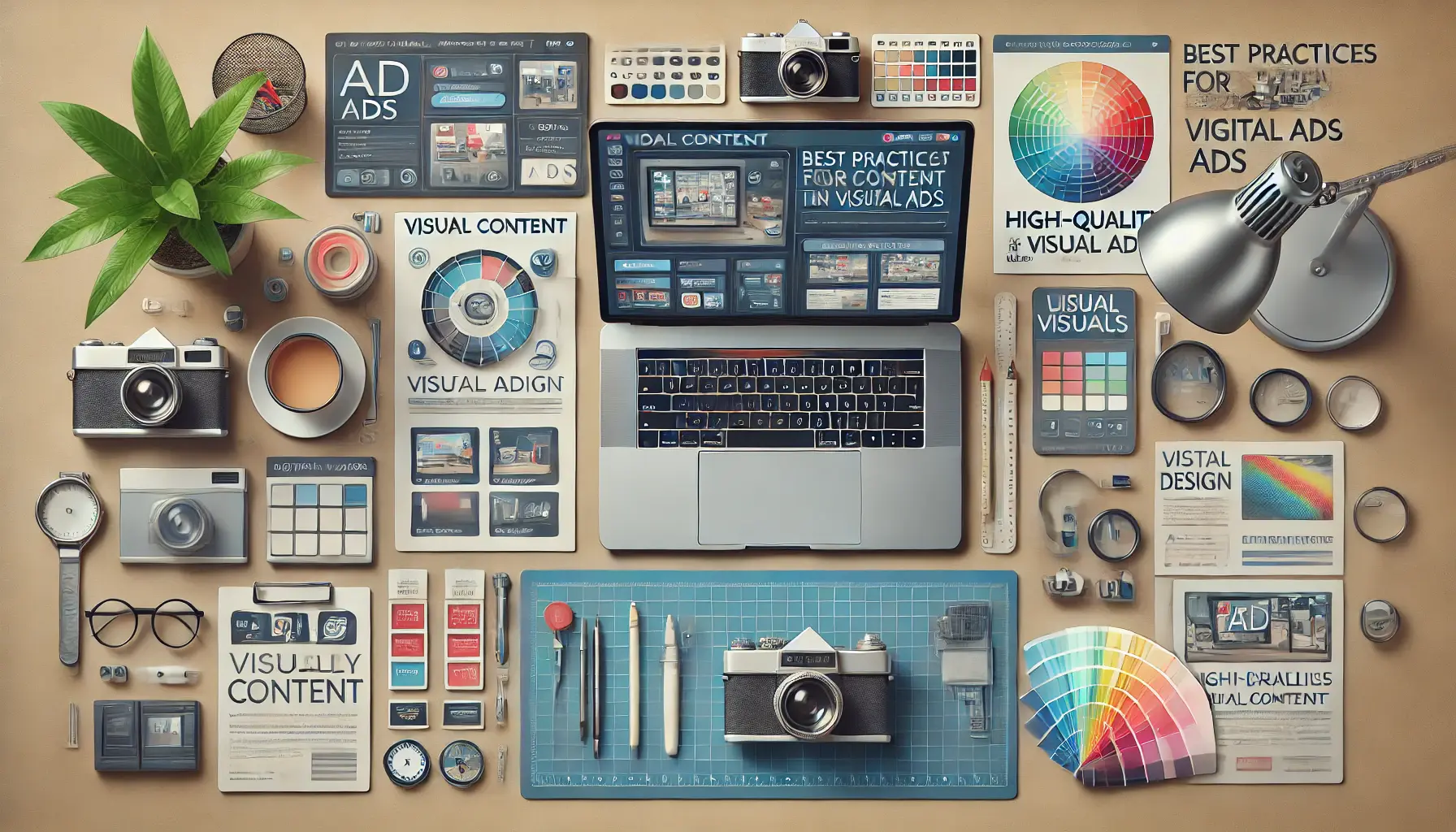
Highlighting the importance of quality visuals and brand consistency in ad content.
Best Practices for Visual Content in Ads
Visuals are essential to capture attention and complement your ad content’s message.
A good visual should be relevant, high quality, and aligned with the tone and objective of the ad.
- Use High-Quality Images: A blurry or poorly composed image can make your ad look unprofessional. Choose visuals that emphasize the message and appeal to the target audience.
- Keep Visuals Simple: Overly detailed visuals can overwhelm viewers. Simplify by focusing on elements that reinforce your core message.
- Incorporate Branding Elements: Including your logo, brand colors, or consistent design elements reinforces brand recognition.
The ability to create ad content that is both engaging and visually appealing takes practice and attention to detail.
These approaches, when implemented effectively, help you create captivating Google Ad content, capture attention, drive engagement, and boost conversions.
Creative ad content stands out, capturing attention in a crowded digital space. Unique presentation increases relevance and attracts viewers.

Using audience insights to shape creative ad strategies in digital marketing.
Leveraging Audience Insights for Creative Ads
The ability to understand your audience is key in the creation of Google Ads content.
By leveraging audience insights, you can make your ads more relevant, personal, and ultimately more effective.
Google Ads provides various tools to analyze audience behavior, preferences, and demographic details, allowing you to shape ad content that feels targeted to each viewer.
This approach also helps you design ads that speak directly to the needs and wants of users, based on what they value, the obstacles they face, and how they interact with content.

Analyzing audience preferences and behavior for effective ad strategies.
Understanding Audience Preferences and Behavior
Knowing your audience’s interests and online behavior is essential for creating Google Ads that resonate.
Here are some effective strategies:
- Identify Key Interests: Use Google Analytics and Audience Manager within Google Ads to find common interests, online activities, and purchasing behaviors of your target audience.
- Map Customer Journey: Analyze how users interact with your ads and website to identify key stages at which they are more likely to convert, such as during the research or decision phase.
- Segment Your Audience: Divide your audience into distinct groups based on age, gender, location, or interests to create personalized ad content for each demographic.

Leveraging demographic insights to tailor ad content for target audiences.
Using Demographics to Shape Ad Content
Audience demographics are critical for determining the tone, language, and visual style of your ads.
With Google Ads targeting, you can display ads based on demographic information, ensuring the right message reaches the right people.
- Age-Based Targeting: Different age groups, from children to elderly adults, respond to varied messaging styles and visuals. Tailor your creative approach to each distinct age segment within your customer base.
- Location-Based Customization: Develop location-specific ad content that connects with the local market by addressing regional needs, cultural differences, or seasonal factors.
- Gender Preferences: Certain products or services may appeal more to one gender. Personalize ads with visuals or language that resonates with each gender group.

Using audience data to create tailored, impactful ad experiences.
Creating Personalized Ads with Audience Data
Personalized ads are increasingly effective in today’s digital landscape.
Audience insights enable you to tailor Google Ads content to different audiences, making each ad feel more relevant and engaging for the viewer.
Here are a few methods to leverage these insights:
- Dynamic Ad Features: Use dynamic ad features in Google Ads to show personalized headlines, descriptions, or images based on user behaviors and interests.
- Custom Intent Audiences: Reach people who have recently shown interest in products like yours, capturing users’ attention when it matters most.
- Remarketing: Re-engage users who previously interacted with your ads or visited your website, reminding them of your brand with ads that align with their past interactions.

Showcasing diverse, audience-focused ad campaigns based on demographic insights.
Real-World Examples of Audience-Centric Creativity
Many brands have successfully used audience insights to create effective Google Ads that resonate with their audiences.
Below are a few examples:
- Example 1: An e-commerce brand crafted ad campaigns based on demographic insights that targeted each age group specifically, increasing engagement and conversion rates across all segments.
- Example 2: A travel company used location-based insights to promote destination-specific ads, making each ad feel personally relevant to users based on their current location.
- Example 3: A tech company utilized remarketing and custom intent audiences to target users who had shown prior interest in similar products, leading to a higher return on ad spend.
By using audience insights, you can create creative and highly targeted Google Ads that connect with users on a personal level, driving better engagement, higher conversions, and fostering long-term brand loyalty.
Understanding audience insights helps tailor ads to resonate more effectively with viewers, increasing relevance and engagement.
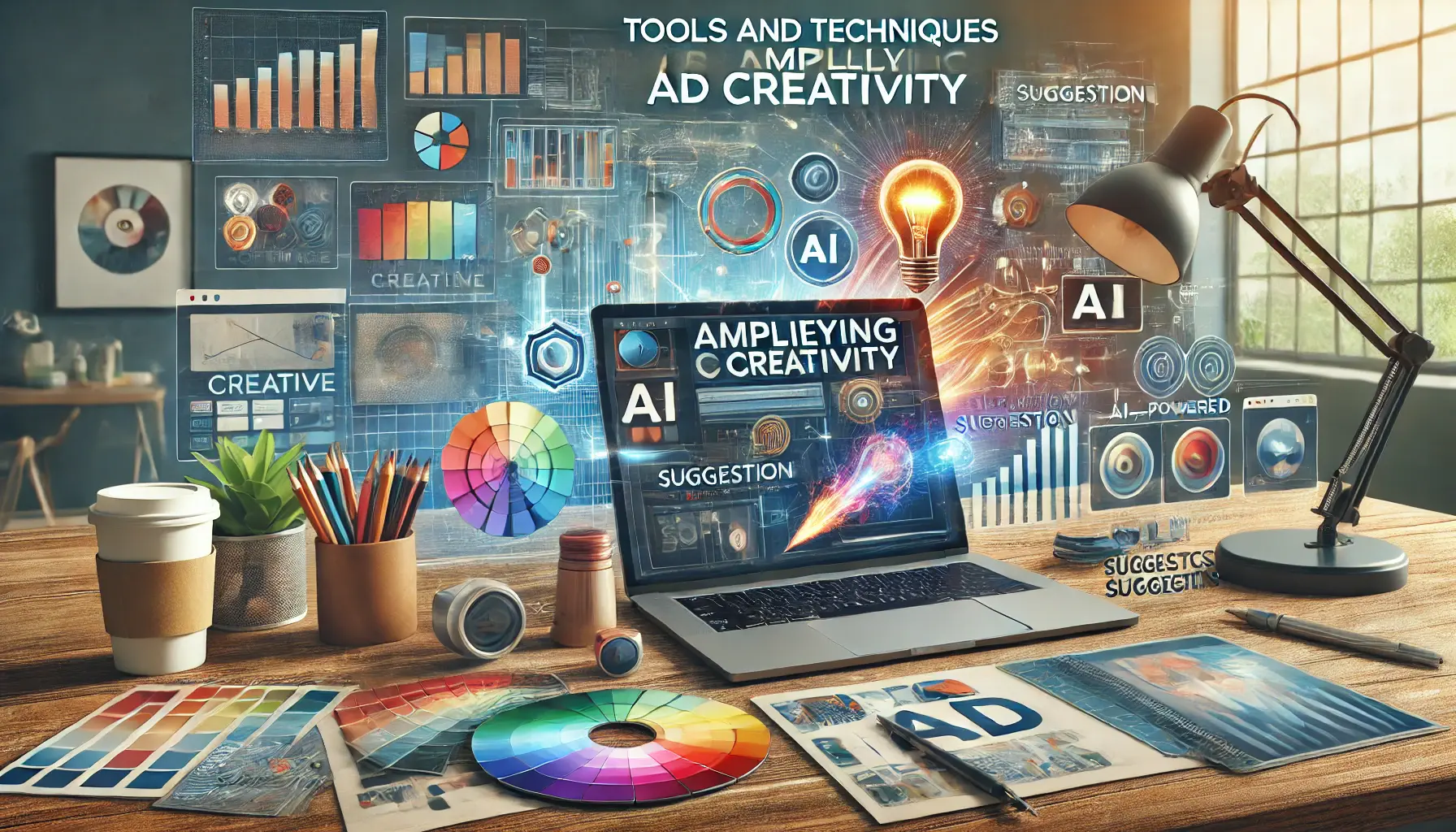
Exploring tools and techniques to elevate creativity in ad campaigns.
Tools and Techniques for Amplifying Ad Creativity
Creating high-performing, creative Google Ads means having the right tools and techniques.
Google Ads offers various built-in tools and features that help maximize creativity and effectiveness.
From automated solutions to advanced analytics, these tools provide insights, flexibility, and efficiency, allowing marketers to craft compelling ads that resonate with target audiences.
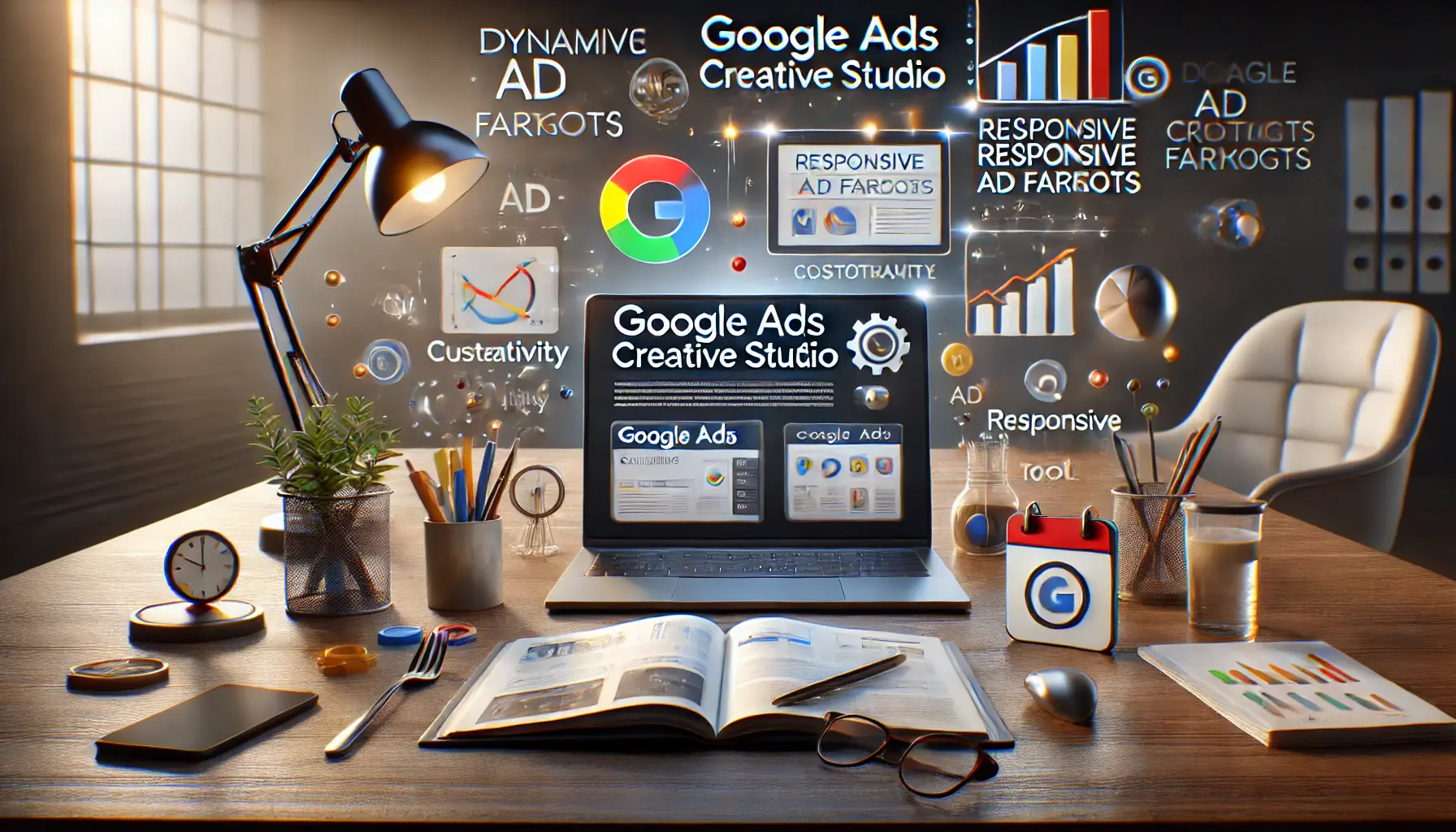
Highlighting the powerful features of Google Ads Creative Studio for optimized ad creativity.
Google Ads Creative Studio: Key Features
Google Ads Creative Studio is a powerful tool designed to streamline the creative process and optimize ad content.
It allows marketers to experiment with various formats, adapt ad templates, and produce high-quality, graphically engaging ads that align perfectly with campaign objectives.
- Dynamic Ad Customization: Personalize ad content based on user data, such as location or browsing behavior, to create tailored messages that feel more relevant to each viewer.
- Responsive Ad Formats: Create ads that automatically adjust their size and layout to fit different device sizes and screen orientations, ensuring a consistent user experience across platforms.
- Collaborative Features: Google Ads Creative Studio enables team members to collaborate in real-time, with feedback and edits seamlessly managed within the platform.

Exploring the role of AI-powered tools in enhancing ad creativity and development.
AI-Powered Tools for Creative Ad Development
Artificial intelligence-powered tools are transforming how marketers approach ad creation by providing data-driven insights and automating certain creative tasks.
These tools help advertisers create more engaging content, improve ad targeting, and adapt to changing user preferences.
- Automated Ad Suggestions: Google Ads offers automated suggestions for ad copy, headlines, and images based on high-performing templates and best practices.
- Predictive Analytics: Use AI-driven analytics to predict which of your ad creatives will perform best, allowing you to focus on the most effective visuals and messaging.
- Voice Search Optimization: With the growing prevalence of voice search, optimizing ad content for voice-driven queries helps you reach a broader audience, especially on mobile devices.
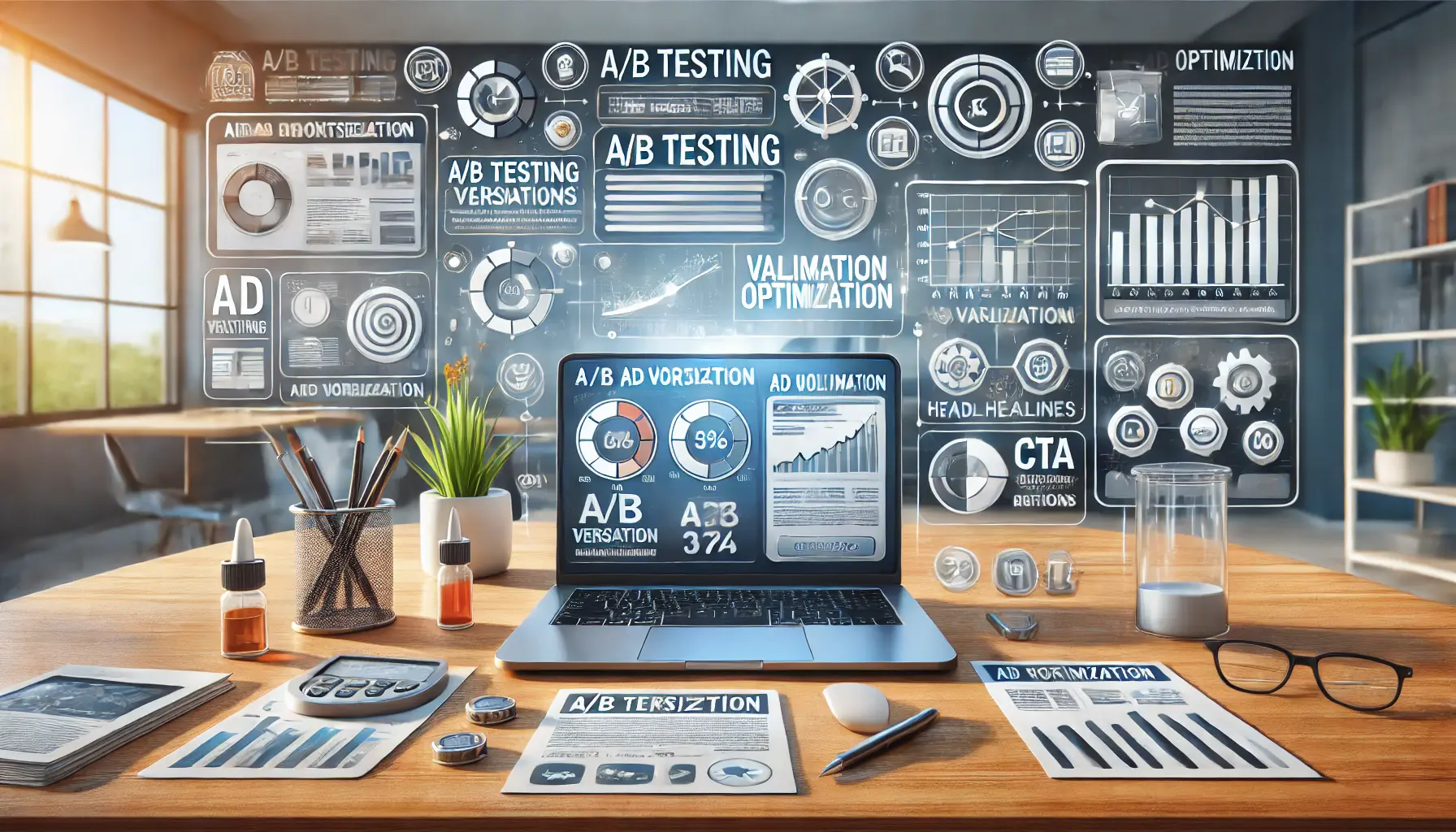
Refining ad effectiveness through testing and optimizing different ad variations.
Testing and Optimizing Ad Variations
Testing different creatives, such as visuals, text, and calls to action, is key to understanding what works best.
This iterative process helps refine and optimize your ad content further.
- A/B Testing: Compare two or more ad variations to identify which one generates the highest levels of engagement, clicks, or conversions.
- Multivariate Testing: Test several variables at once to find the optimal combination of imagery, text, and design elements.
- Automated Bidding for Optimized Ads: Use Google’s automated bidding strategies to dynamically adjust ad bids based on performance, ensuring your budget is spent on the best-performing ads.
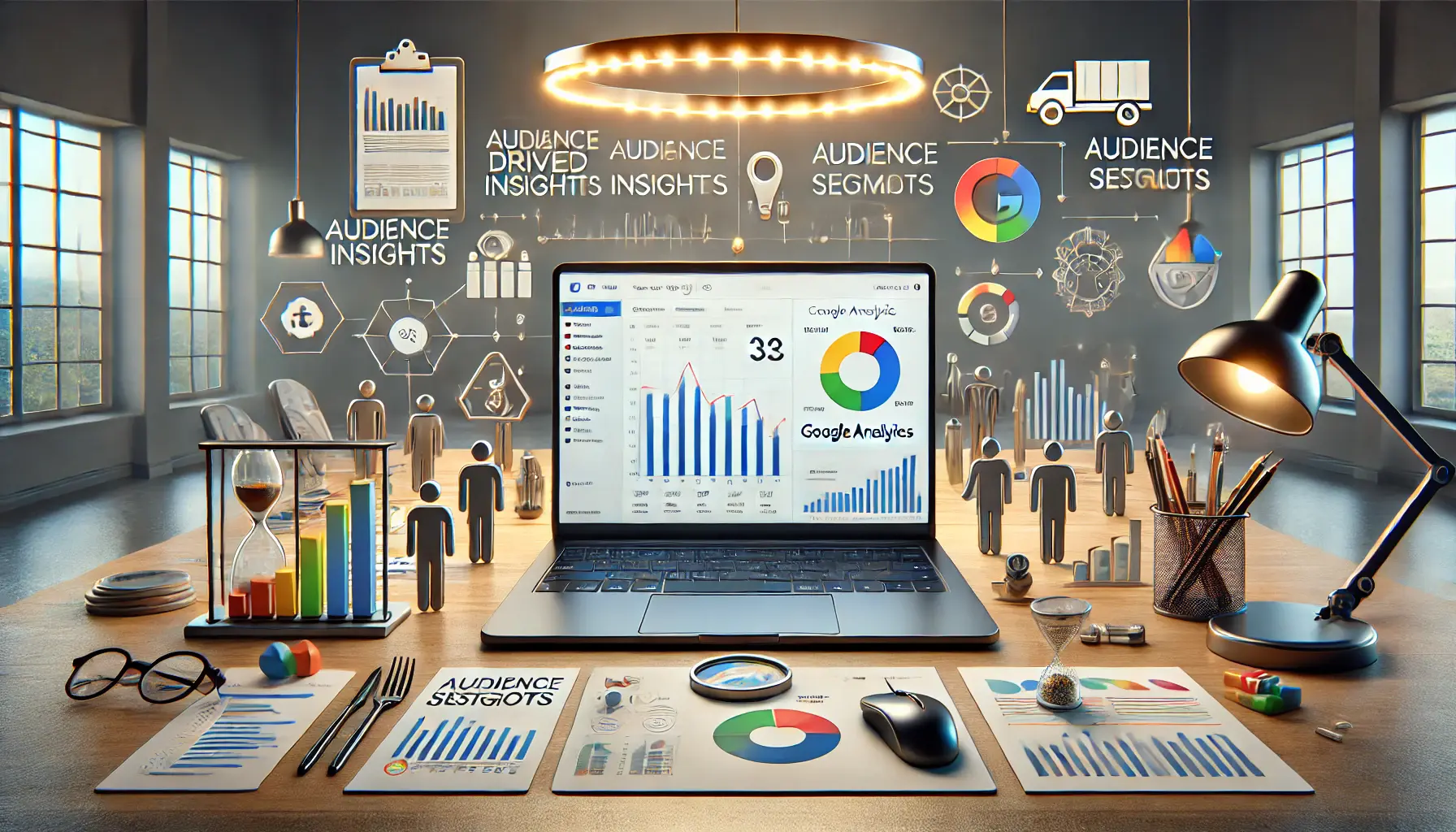
Utilizing Google Analytics to inform and shape creative ad strategies.
Using Google Analytics for Creative Insights
Google Analytics provides valuable insights into ad performance, allowing for a data-driven approach to enhancing ad content and strategies.
By analyzing user behavior, demographics, and engagement metrics, you can refine your ad creative and maximize impact.
- Audience Reports: Access detailed reports on who is responding to your ads, helping you create content tailored to the right audience segments.
- Behavior Flow Analysis: Understand how users navigate through your site after clicking on your ad, identifying potential bottlenecks or opportunities for creative refinement.
- Conversion Tracking: Track which creative elements drive conversions, enabling you to optimize future ads based on proven success factors.
Enhancing ad creativity within Google Ads is a systematic, data-driven process when equipped with the right tools and techniques.
By utilizing these resources, you can design ads that not only capture attention but also drive measurable results, helping you achieve your marketing goals with greater efficiency.
Tools like Google Ads Creative Studio and AI-powered solutions make it easier to design engaging, high-performing ad content.

Analyzing and optimizing ad creative performance through data-driven metrics.
Measuring and Optimizing Ad Creative Performance
One of the best ways to ensure that your Google Ads are performing at their ultimate best is to track the performance of your ad creative, measure it, and refine it on a regular basis.
Ad creative is not static; it evolves with time, performance data, and changing user preferences.
By applying key metrics and routine testing, you can optimize your ads for the best results, driving both engagement and conversions.
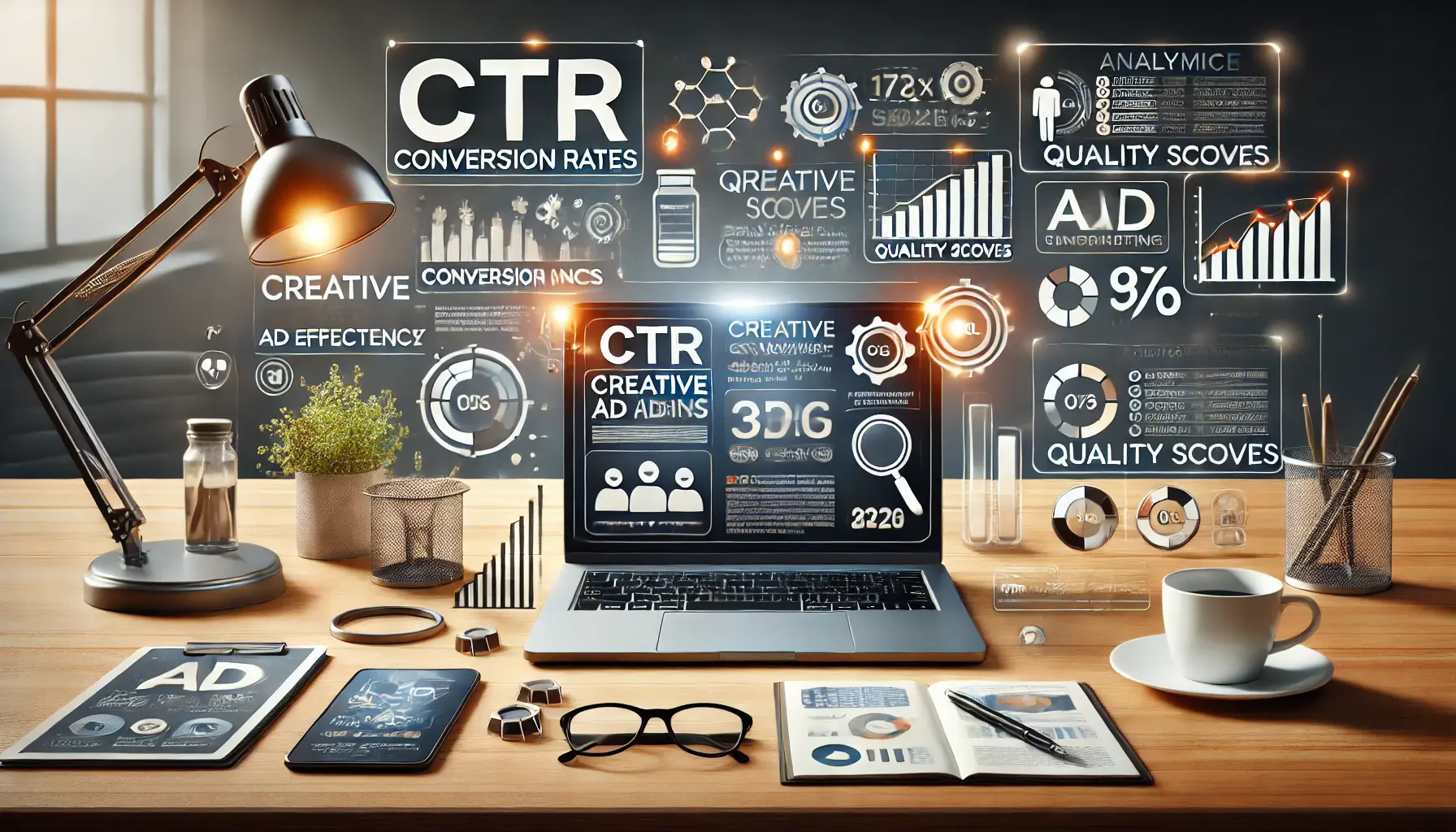
Identifying essential metrics to measure the effectiveness of creative ad content.
Key Metrics for Creative Ad Effectiveness
Several key metrics can help you determine how well your ad content and creative are performing.
By tracking these indicators, you can identify what resonates with your audience and what may need improvement.
- Click-Through Rate (CTR): CTR indicates the percentage of individuals who clicked on your ad after seeing it. A high CTR shows that your audience finds the ad content relevant and interesting.
- Conversion Rate: Conversion rate measures the percentage of users who took the desired action after clicking on your ad, such as making a purchase or signing up. This metric reflects the effectiveness of your ad in driving user actions.
- Cost Per Click (CPC): CPC represents the amount you pay for each click. Lower CPCs, combined with high engagement, indicate efficient budget usage and effective ad targeting.
- Quality Score: Google assigns a Quality Score based on factors such as ad relevance, landing page experience, and expected CTR. Higher Quality Scores can improve ad placement and reduce costs.
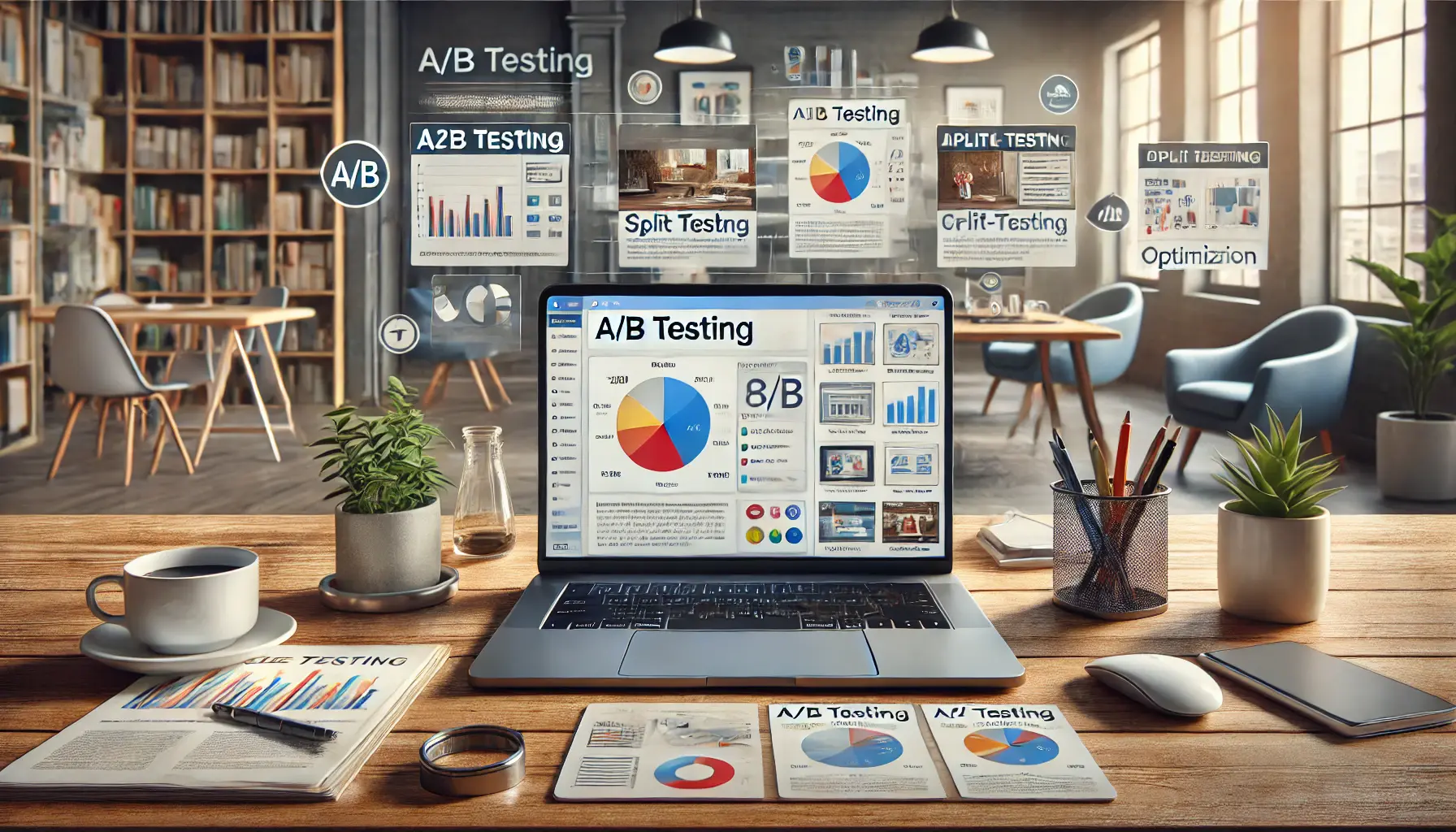
Utilizing A/B testing to refine creative elements in Google Ads for optimized performance.
A/B Testing Creative Elements in Google Ads
By testing variations of your ad creative—headlines, visuals, and calls to action—you can discover which elements resonate most with your target audience.
A/B testing is a valuable method for enhancing ad performance.
- Headline Testing: Test multiple headlines to identify which one captures attention and increases CTR.
- Visual Variation: Experiment with various images or video content to assess which visuals engage users most effectively.
- Call to Action (CTA): Test different CTAs to find the phrases or styles that work best for driving user interactions.
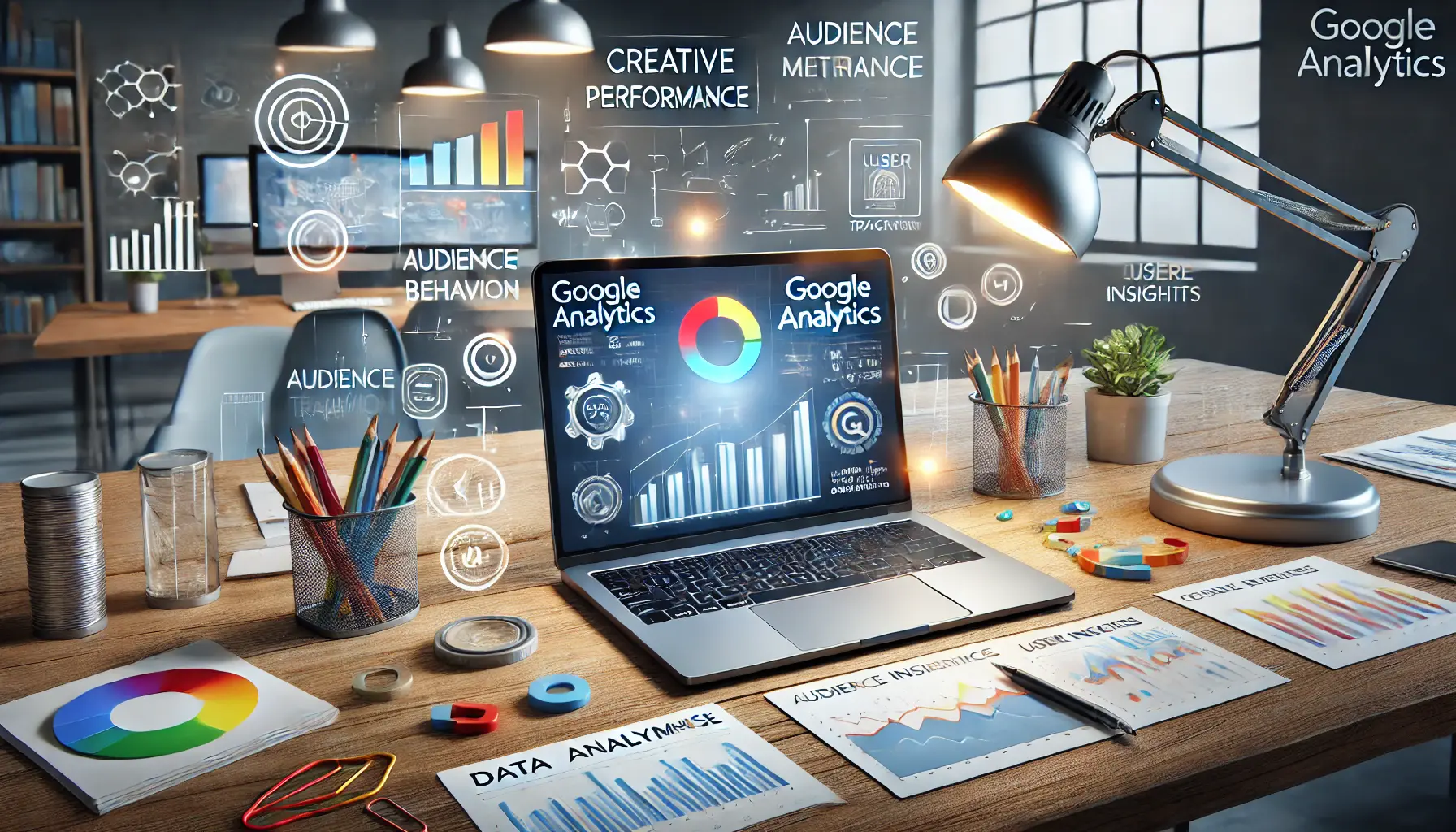
Using Google Analytics to evaluate and enhance creative ad performance.
Analyzing Creative Performance with Google Analytics
Google Analytics is an essential tool for understanding ad performance.
Along with tracking user engagement, site behavior, and conversion data, it provides insights that help you optimize your ad content.
- User Engagement Metrics: Metrics such as bounce rates, time on site, and pages per session reveal how effectively your ad content engages visitors.
- Behavior Flow: Analyze the path users take on your site after clicking on your ad to identify any bottlenecks that may require adjustments.
- Goal Tracking: Set specific goals in Google Analytics to measure the effectiveness of your ad campaigns in achieving targeted objectives, such as sales or newsletter sign-ups.
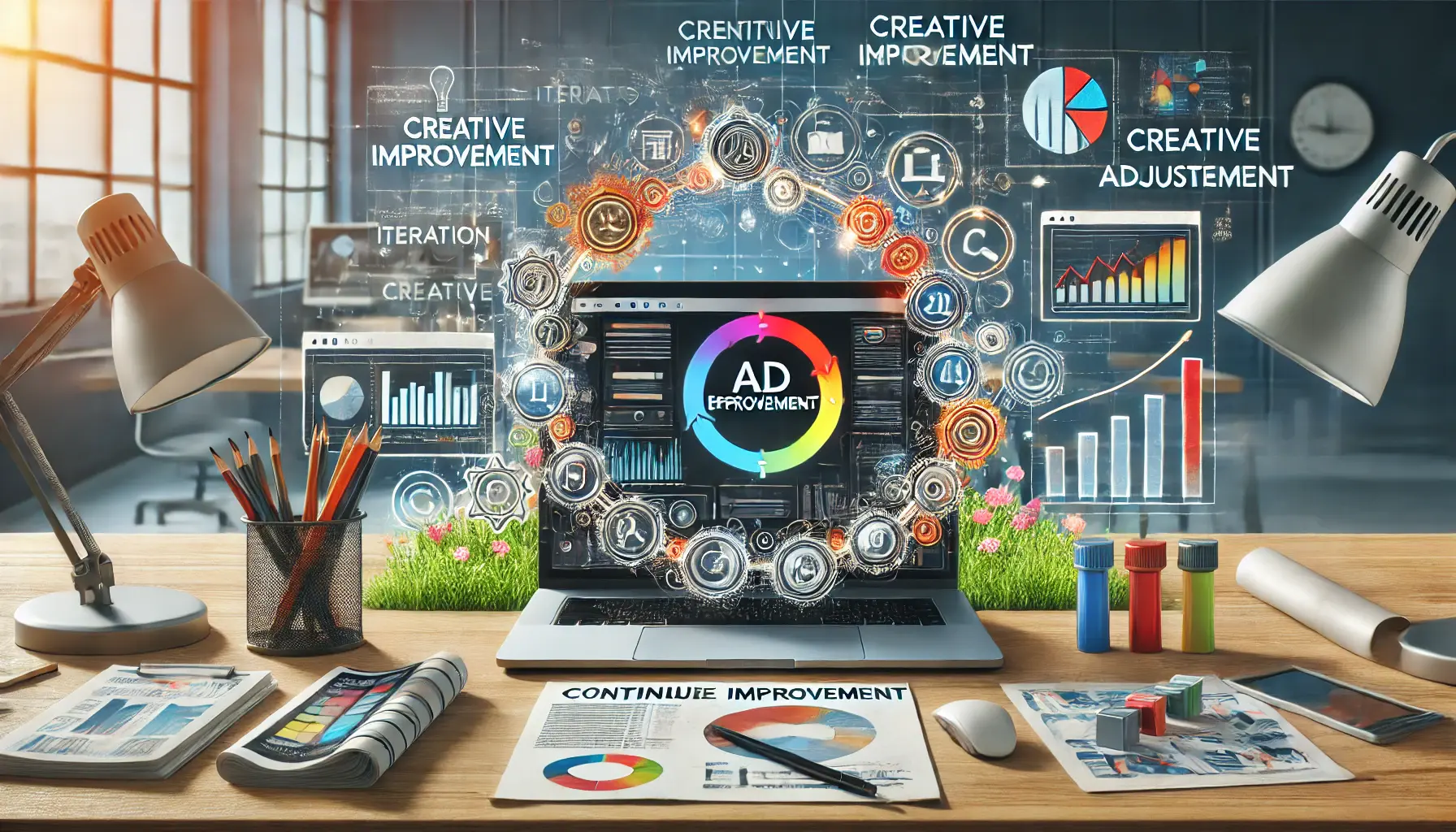
Applying continuous improvement through creative iteration in ad development.
Continuous Improvement with Creative Iteration
Creative iteration involves making small, continuous adjustments to your ad content to meet evolving user expectations and improve performance.
Use insights from testing and metrics to make data-driven adjustments to your ads over time.
- Regular Content Updates: Refresh your ad visuals, headlines, or CTAs periodically to keep content engaging and prevent viewer fatigue.
- Seasonal Adjustments: Adapt your ad creatives for seasonal trends or holidays to align with user interests and needs during different times of the year.
- Feedback Loop: Establish a process for collecting feedback and performance data regularly, using it to inform future ad iterations and maximize effectiveness.
By closely monitoring performance and continually improving your ad content, you can ensure that your Google Ads remain effective, engaging, and aligned with your audience’s needs, ultimately achieving higher engagement and conversions.
Tracking key metrics such as CTR, conversion rateThe percentage of users who complete a desired action after clicking an ad., and CPC helps optimize ad content and improve audience engagement.
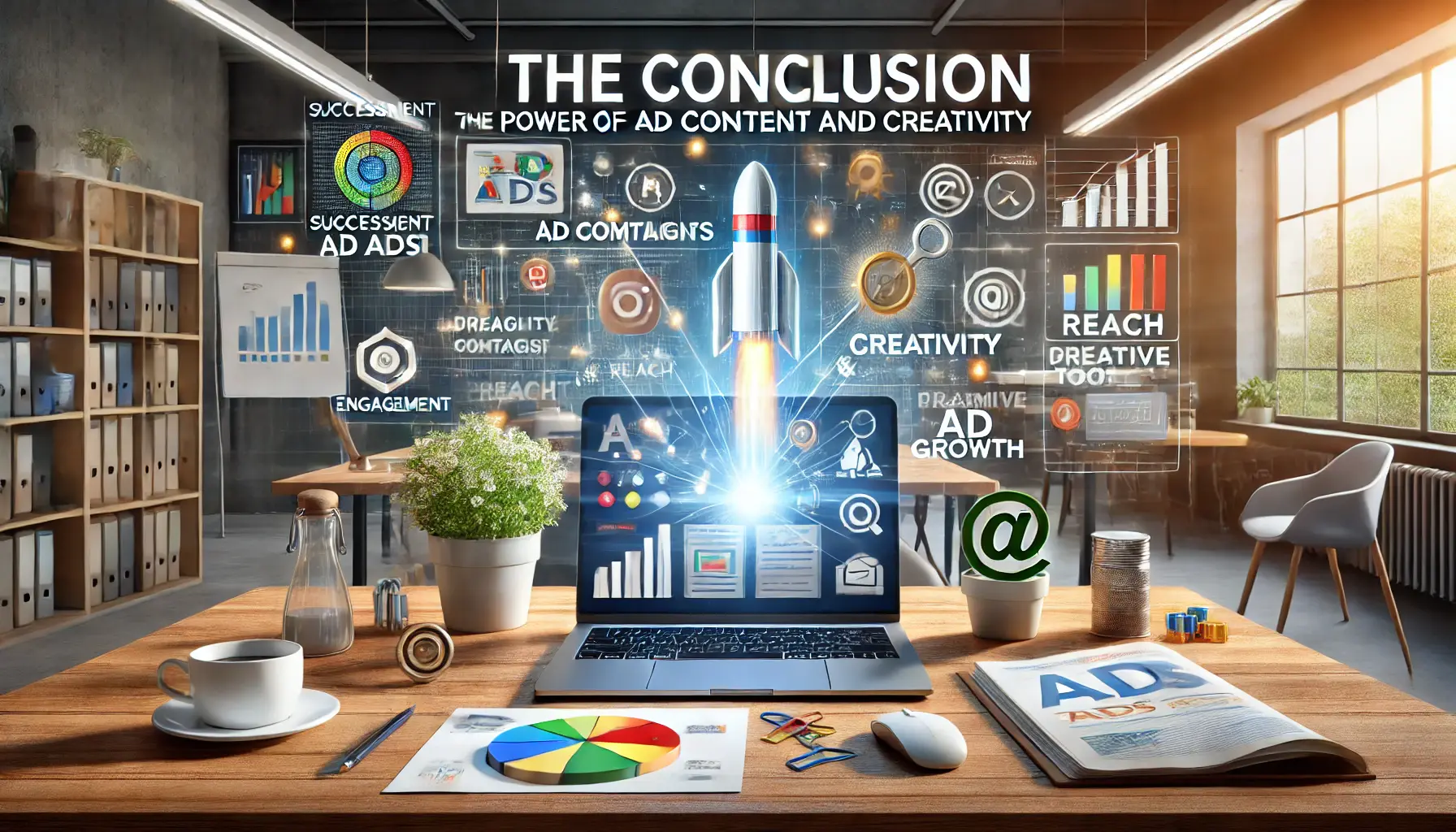
Summing up the impact of creative ad content in driving success on Google Ads.
Conclusion: The Power of Ad Content and Creativity in Google Ads
Today, digital advertising is moving at a fast and dizzying pace.
Considering such unstoppable dynamics, there are few things as crucial in a Google Ad as ad content and creativity.
Effective ad campaigns depend on creative, targeted content that resonates with the audience and adapts to evolving tastes and behaviors.
By focusing on compelling ad content, marketers can stand out in competitive spaces, capture attention, and drive users to take action.
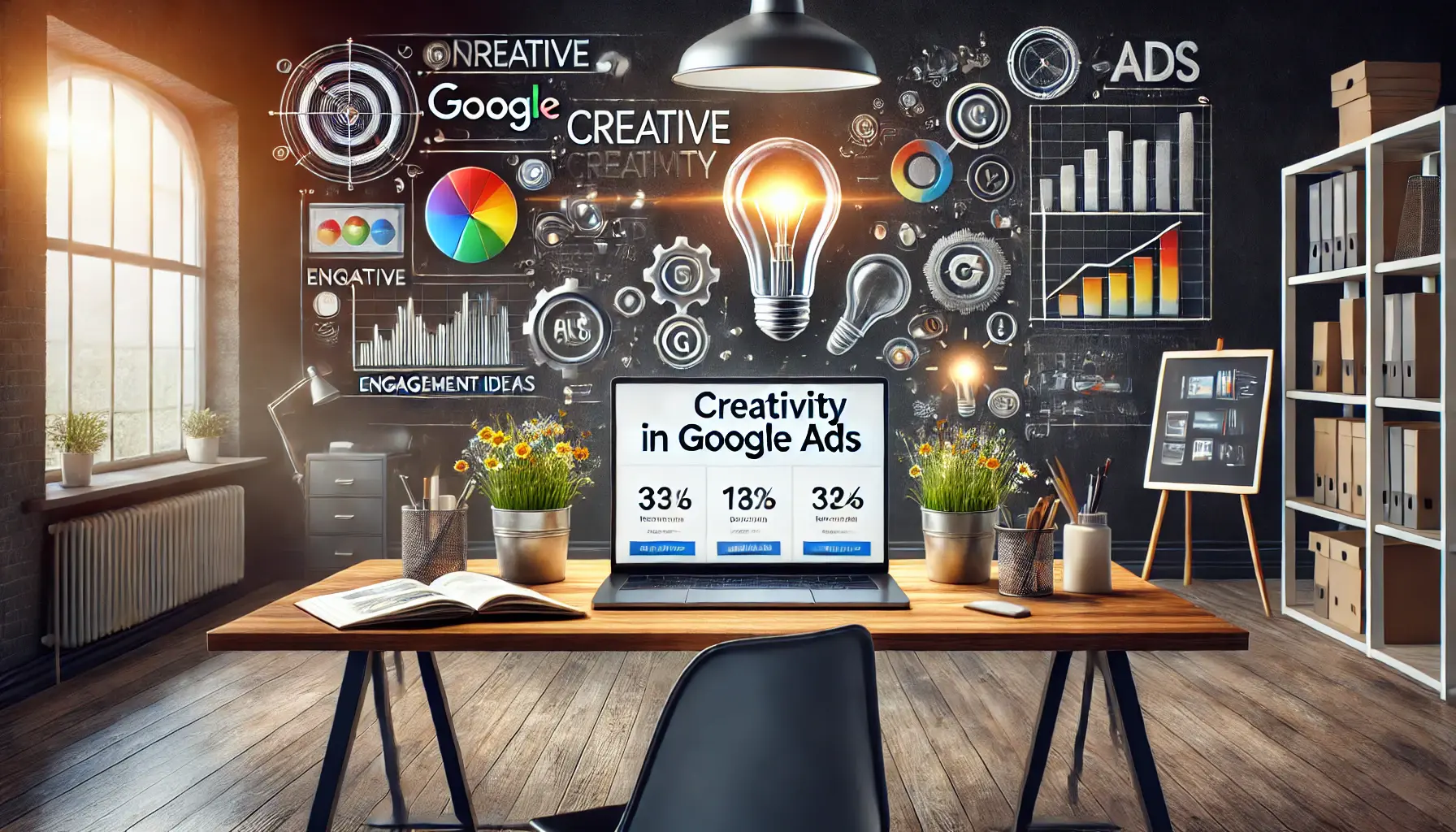
Emphasizing the importance of creativity in engaging Google Ads campaigns.
Why Creativity Matters in Google Ads
Creativity is the backbone of effective Google Ads.
It’s about more than just eye-catching visuals; creative ads make meaningful connections with users.
They engage, inform, and inspire—leading to higher click-through rates and improved conversion rates.
With tools like Google Ads Creative Studio and AI-powered solutions, advertisers have a wide range of resources to create content that is both compelling and relevant.
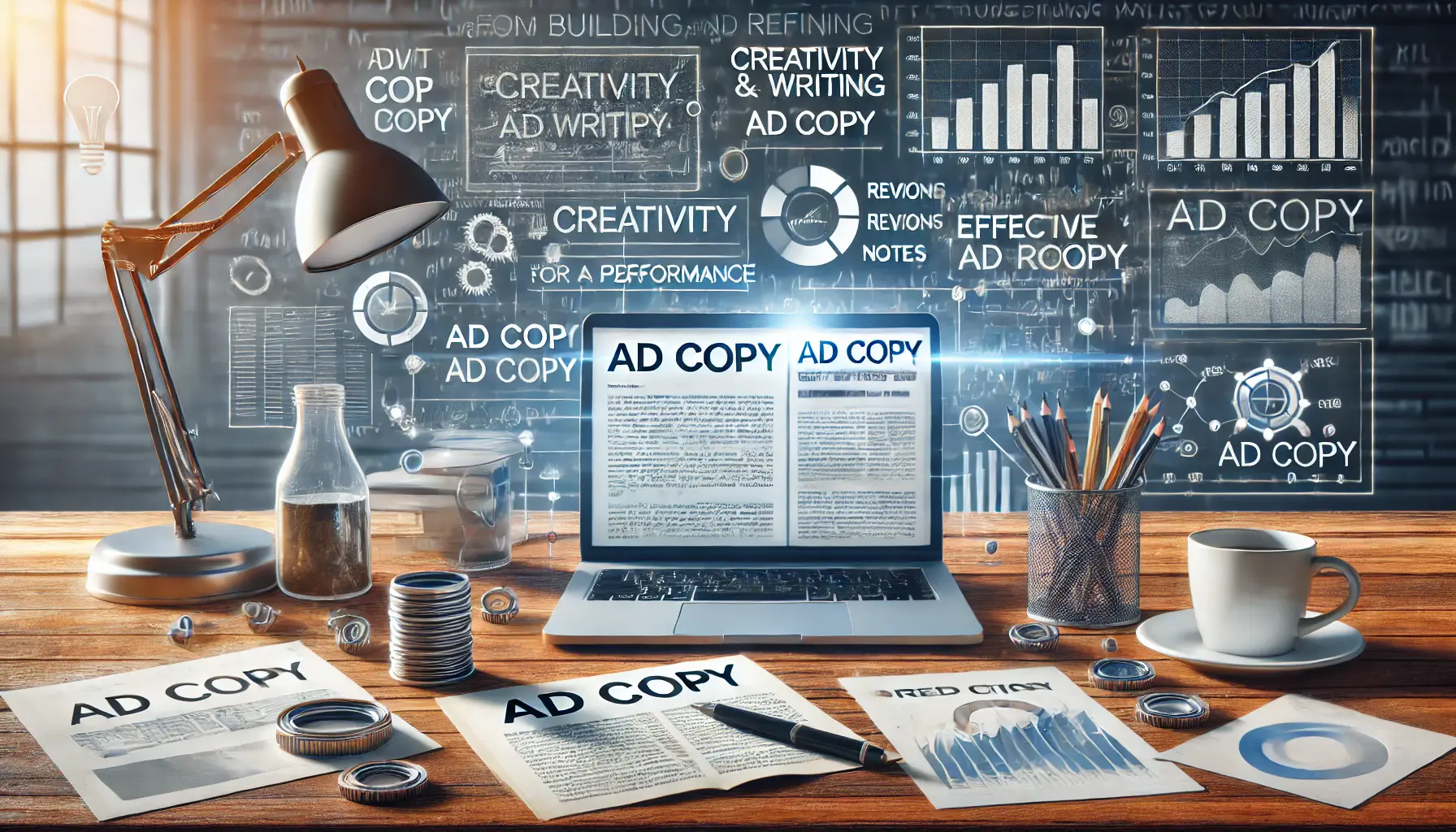
Crafting and improving ad copy for clarity and effectiveness in digital marketing.
Building and Refining Ad Copy
Creating ad content that truly connects with your audience is both an art and a science.
From understanding audience behavior and preferences to crafting personalized and emotionally resonant ads, content lies at the heart of building strong connections with potential customers.
Through A/B testingA method of comparing two versions of an ad to determine which performs better. and dynamic ad content customization, marketers can iteratively refine their ads to ensure each version aligns with audience expectations and campaign objectives.
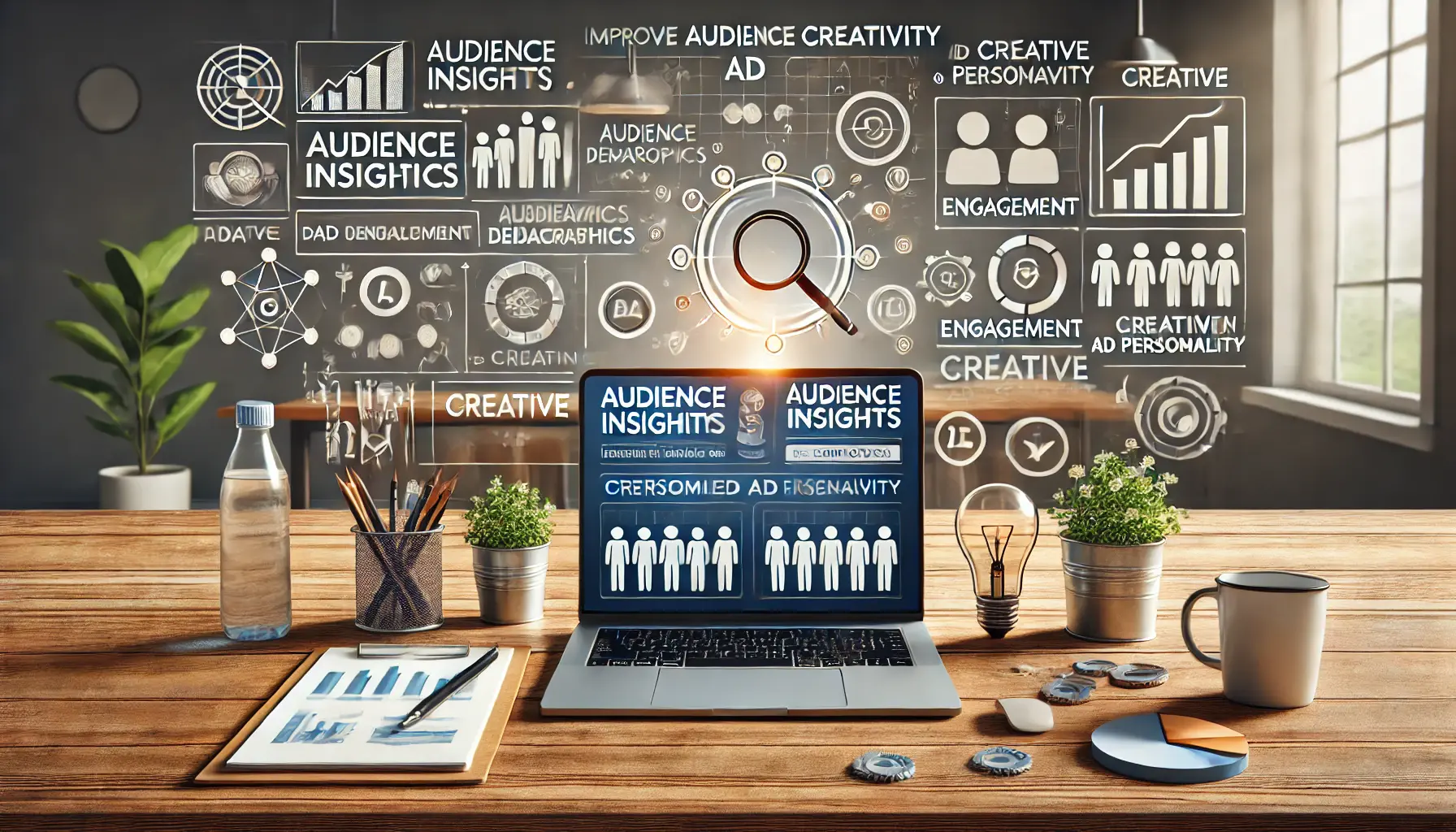
Leveraging audience insights to create impactful and tailored ad creative.
Using Audience Insights to Improve Ad Creative
Audience insights are essential for devising relevant and impactful Google Ads.
By applying demographics, interests, and behavior data in ad design, marketers can communicate directly to the needs and interests of specific segments.
Personalized advertisements not only increase relevance but also foster a deeper connection between the brand and the user, resulting in higher engagement and long-term loyalty.

Utilizing tools and techniques for ongoing improvement in ad strategies.
Tools and Techniques for Continuous Improvement
Ad performance is anything but static; continuous monitoring and optimization are essential.
Key metrics such as CTR, conversion rate, and CPC provide insight into what’s working and where adjustments are needed.
With tools like Google AnalyticsA web analytics tool by Google that tracks and reports website traffic and user behavior., advertisers can track these metrics, make data-driven decisions, and optimize ad creative effectively.
Additionally, iterative adjustments—where small changes to visuals, messaging, and CTAs are made based on performance data—help ads stay fresh and aligned with user preferences.
Seasonal adjustments and feedback loops allow for consistent refinement, making each ad cycle more impactful than the last.
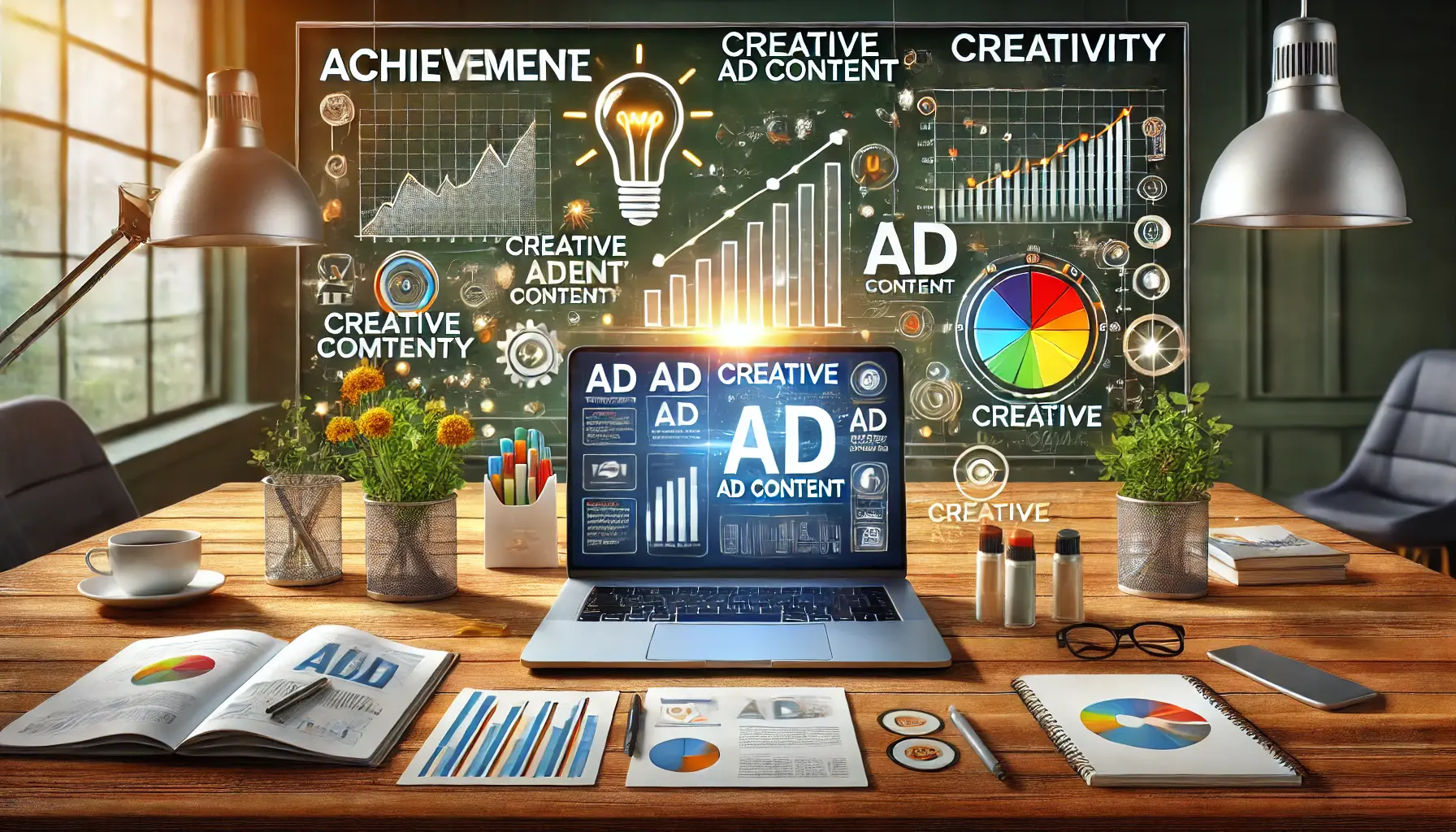
Illustrating the success achieved through impactful ad content and creativity in digital marketing.
Achieving Success with Ad Content and Creativity
In summary, creativity in ad content is essential for achieving success in Google Ads.
By applying data insights, utilizing available tools, and maintaining a strong focus on audience needs, marketers can create powerful ads that drive results.
Effective ad content and creativity do more than attract clicks; they build trust, foster engagement, and drive conversions.
As you develop your Google Ads strategy, remember that continuous improvement is key.
Embrace creativity, measure performance, and refine your approach to keep ads relevant, engaging, and aligned with your audience’s needs.
With thoughtful and creative ad content, your Google Ads can stand out and thrive in today’s competitive digital landscape.
Ad content and creativity drive success in Google Ads, engaging audiences and improving ad performance over time.
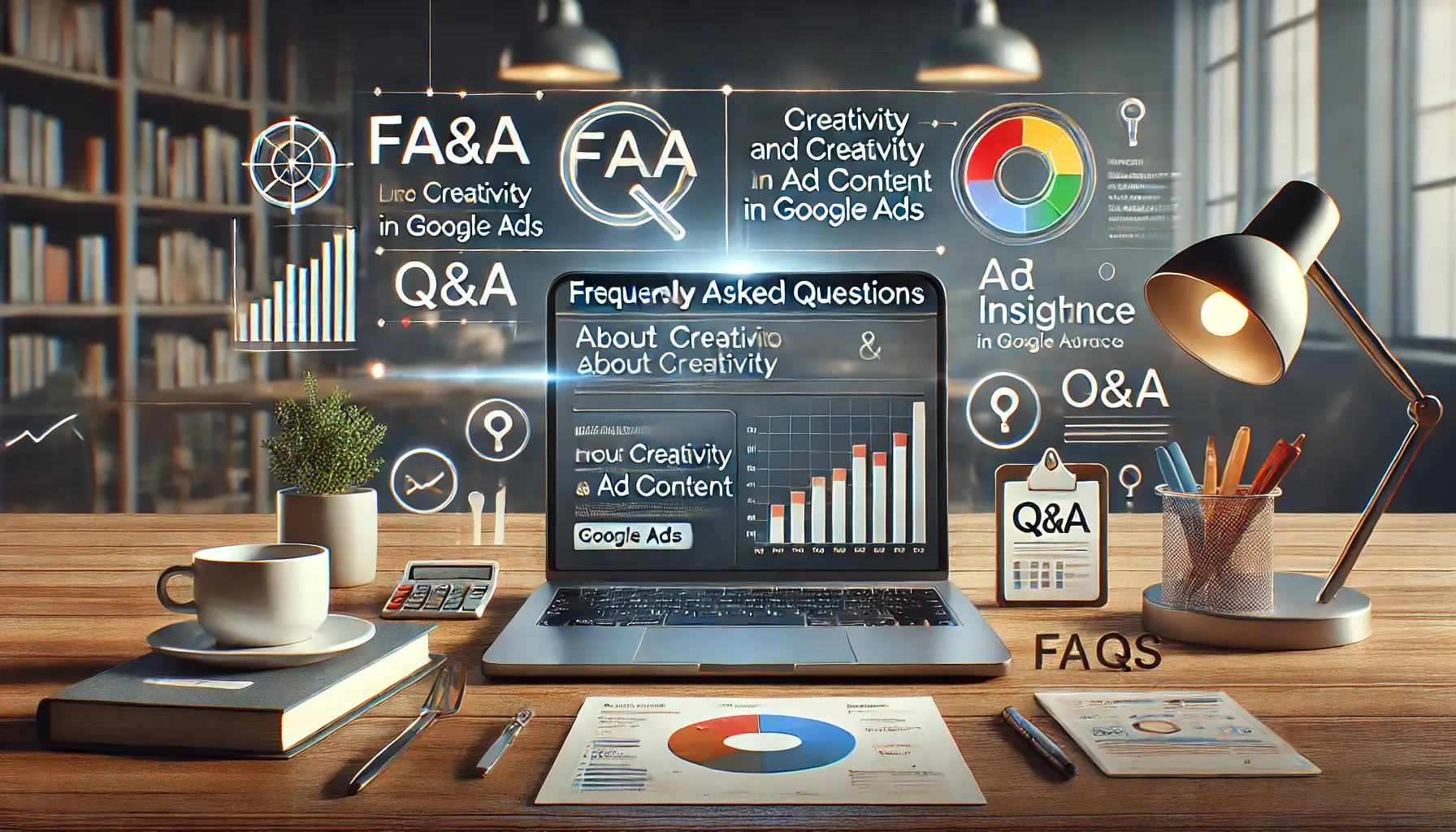
Answering frequently asked questions about creativity and ad content in Google Ads.
Your campaigns can be managed by an agency specialized in Google Ads, check out our service page.
Google Ads Creativity and Ad Content FAQs
Below are some frequently asked questions about creativity and ad content in Google Ads.
These insights will help marketers understand how to build effective ads that resonate with their audience and drive meaningful engagement.
Creativity is important because it grabs attention, engages users, and makes ads more relevant.
This helps raise click-through rates and conversions amidst fierce digital competition.
Tools like Google Ads Creative Studio, AI-powered ad solutions, and Google Analytics offer insights, customization, and testing capabilities to make ads more visually appealing and aligned with user preferences.
Audience insights provide valuable data on demographics, behaviors, and interests, enabling marketers to create targeted, relevant, and personalized ads that resonate with specific segments.
Key metrics include CTR, Conversion Rate, Cost per ClickThe amount paid each time a user clicks on an ad, abbreviated as CPC., and Quality ScoreA score assigned by Google to assess the relevance and quality of ads, keywords, and landing pages..
These indicators help assess ad effectiveness and guide content refinements for better results.
Regular updates are recommended, along with seasonal adjustments and periodic refreshes to keep content engaging and prevent viewer fatigue, ensuring ads remain effective.
A/B testing allows marketers to test variations in ad elements, such as headlines and visuals, helping identify the most effective combinations for engagement and conversions.
Yes, audience behavior often follows seasonal trends.
By refreshing ad creatives to match holiday or seasonal themes, relevance and engagement can improve at key times of the year.
A high Quality Score ensures better ad placement and lower costs.
It is calculated based on ad relevance, landing page experience, and expected CTR, making it crucial for performance optimization.
Dynamic customization personalizes ad content based on user data, such as location or behavior, making ads more relevant and increasing the likelihood of resonating with each viewer.
